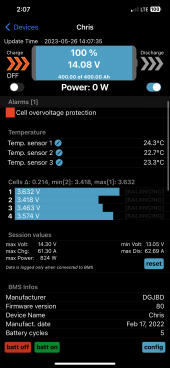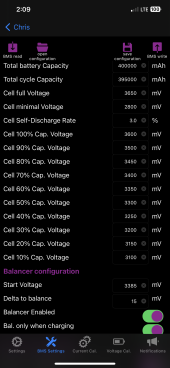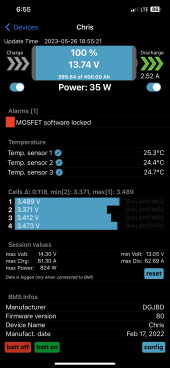Oh okay, thank you very much for explaining it.Disconnect all the loads and charging and let it sit for a few hours at least before trying to charge again. The chemicals inside the battery will drop in voltage a bit as the electrons shuffle themselves around inside. When you go to reconnect it you'll find that the voltages have dropped a bit even with no load, that's what you want to happen.
Think of it like filling a cup of soda at a fountain. It fizzes up, settles down, add more, settle down, etc.
I turned off the charge master switch in the BMS application to allow the cells some time to settle. Here’s a picture of my current status. Seems like the voltage did drop after a few hours and the cells balanced. It usually reads 13.8+ volts when I’m charging both solar and 40amps from dc to dc but now it’s at 79% 13.3volts, seems good and that’s the most I’ve ever charged the battery.
Any suggestions on the random discharge spikes that are showing 40-50amps?
My max draw is only ever around 10amps with everything I have on 12v/inverter 110v items.
Thanks again, cheers!







